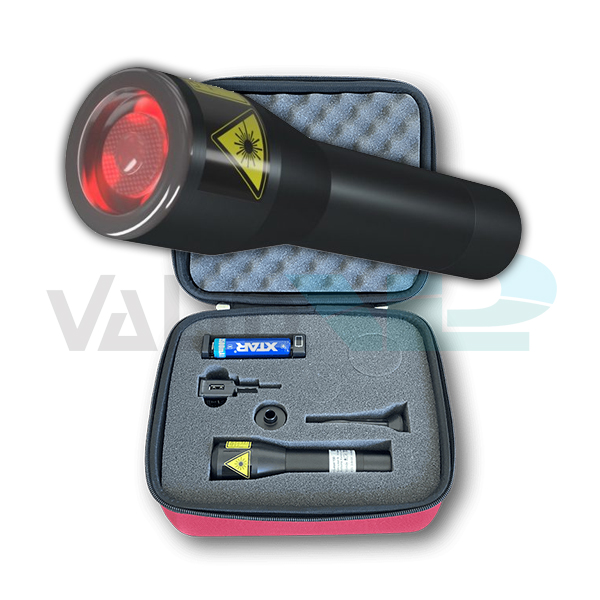Good Ideas On Deciding On A Safe Laser Device
Good Ideas On Deciding On A Safe Laser Device
Blog Article
How Can Safe Laser Low-Level Laser Therapy (Lllt) Aid With The Inflammation Of The Respiratory Tract?
Safe Laser low-level laser therapy can ease irritation to the respiratory tract through various mechanisms. In respiratory conditions like asthma or bronchitis where inflammation of the airways contributes to symptoms such as wheezing and coughing LLLT can ease inflammation and improve breathing.
Bronchodilation - LLLT stimulates relaxation of the smooth muscles in the airways leading to bronchodilation. This could be beneficial to patients suffering from ailments like asthma or chronic obstruction of the lung (COPD) in which bronchoconstriction causes breathing difficulties.
Improved blood circulation - LLLT stimulates microcirculation by increasing vasodilation. This boosts the flow of blood into the lung. A better blood flow can provide nutrients and oxygen to the inflamed tissues, promoting healing and reducing inflammation.
Enhanced Immune Function LLLT enhances the production of cytokines, as well as phagocytosis. Phagocytosis is the process by which immune cells engulf pathogens. This could help increase the immunity against respiratory infection and decrease inflammation of the airways.
Reduction of Mucus Production LLLT can help decrease excessive production of mucus in the airways, by facilitating the removal of mucus and decreasing inflammation of the respiratory tract. This may be beneficial to people suffering from chronic sinusitis and bronchitis where excess mucus triggers respiratory symptoms.
Alleviation Of Allergic Reactions LLLT was investigated as a treatment option for allergic rhinitis as well as hay fever. Both conditions are characterized by irritation of the nasal passages or sinuses caused by allergens. LLLT can help in reducing inflammation and enhancing immunity, may alleviate allergy symptoms such a nasal congestion, sneezing, and itching.
Safe Laser's low-level therapy provides an non-invasive, drug-free remedy for respiratory inflammation. It relieves symptoms and promotes better functioning of the respiratory system. It's best to consult a medical professional before making use of LLLT for respiratory issues. This will ensure you receive the correct treatment and diagnosis. Check out the top rated safe laser 500 ár for blog advice including lágylézer bérlés, lézeres fájdalomcsillapítás, laser kezelés, lagylezer terapia, mozgásszervi problémák, lágy lézer, lágylézeres készülék, lagy lezer, lagylezer terapia, lágylézer kezelés budapest and more.
What Are The Advantages Of A Safe Lasers To Treat Ear, Nose, Sinus And Throat Problems?
Secure Laser Low-Level Laser Therapy (LLLT) can aid with a variety of ENT (ear nose, throat) issues by a variety of ways. Reduced inflammation- LLLT's anti-inflammatory properties may help reduce swelling in tissues surrounding the ear and nasal area. This is beneficial for issues like tonsillitis and sinusitis where inflammation can result in the manifestations such as nasal obstruction, sore throat, and ear discomfort.
Pain Relief LLLT affects pain perception by altering nerve conduction and reducing the release pain-related mediators like substance P. In ENT ailments, LLLT can help alleviate pain associated with sore throat, earache, or pressure on the sinus.
Improved Tissue Repair and Regeneration - LLLT enhances healing and regeneration of tissues by stimulating cell metabolism and the proliferation. LLLT may help to promote faster healing for ENT ailments, like otitis medie (middle ear infections) or pharyngitis.
Improved Circulation - LLLT improves microcirculation and dilation of arteries, resulting in increased blood flow at the site of injury. Increased blood flow could aid in healing and decrease inflammation by improving the flow of oxygen and nutrients.
Antimicrobial Effects - LLLT has been shown to have antimicrobial properties, which can help reduce bacterial or viral load in the throat or nasal passages. This may help in treating infections such as sinusitis and tonsillitis.
Treatment of Allergic Symptoms LLLT could help alleviate symptoms of allergic rhinitis (hay fever) or allergic rhinitis through decreasing swelling of the sinuses. This can reduce nasal congestion, itching and sneezing.
Tinnitus Treatment- LLLT is being investigated as a possible treatment for the condition known as tinnitus. Tinnitus is characterized by an ear-ringing or buzzing sound in the ears. LLLT although not entirely understood, may improve blood flow in the auditory system, and may reduce inflammation, which can result in less tinnitus.
Safe Laser's low-level laser treatment is safe, non-invasive and drug-free, and provides fast healing. Prior to applying LLLT, consult with a specialist ENT to determine the cause and treatment recommendations. Check out the top rated safe laser 500 for website advice including safe laser kezelés budapest, lágylézer kezelés budapest, lágylézer kezelés, laser hu, safe laser vélemények, safe laser használata, safe laser készülék, lágylézer készülékek, safe laser vélemények, lágylézeres készülék and more. 
What Is The Time It Takes For An Effective Laser Device That Is Safe To Take Effect On Acute Conditions?
The amount of time required for the Safe Laser device to take effects on acute ailments can vary depending on factors such as the seriousness of the condition, the individual's response to treatment, and the treatment plan recommended by a medical specialist. Low-level laser therapy can offer relief to a variety of acute conditions, including recent injuries, acute inflammation or sudden episodes. In some instances, individuals can experience pain relief, less swelling, and reduced inflammation after one or two LLLT treatments. To achieve more long-lasting effects However, it's ideal to do several LLLT treatments spread over a period.
The frequency and number of LLLT sessions required for treating acute conditions varies on the type of condition as well as the degree and response of the patient to the treatment. Healthcare professionals generally modify the treatment program according to the needs of each patient that may include scheduling LLLT sessions several times each week for a set duration.
It is essential to adhere to the treatment plan prescribed by a healthcare professional and be present at all scheduled LLLT sessions to maximize the benefits of treatment for acute conditions. Some patients may experience cumulative improvement with continued treatment. If you have concerns or doubts about the treatment plan or the progress it has made, talk to your healthcare provider.